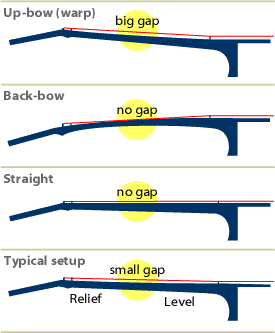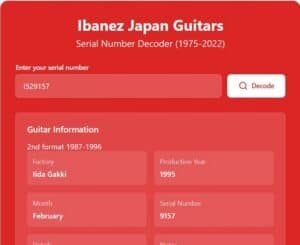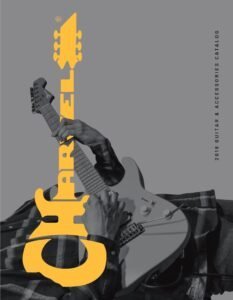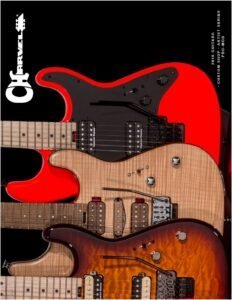I received some time ago a 1974 Greco bass JB-450S in its original hardcase. This is a beautiful instrument that dates back to the time of the Matsumoku / Fujigen transition. However, this bass was unplayable. Indeed, the bass had a back-bow from the 1st to the 6th fret, there was no gap between the strings and the frets and the truss-rod was totally blocked. In this case, there is no other solution than to correct the back-bow on the neck and try to untighten the truss-rod avoiding any damage. So we’ll see how I went with my bass to solve this problem.
Relief of the neck on guitar or bass

How to correct the bow of the neck
In the specific case of my Greco bass, the bow in the first 6 frets was very important, too much to solve the problem with a simple truss-rod adjustment.
So I removed the neck and saw that it was impossible to adjust the truss-rod. After watching many videos, I followed the advice given in one of them to try to repair the neck.
For this, I put the neck on my workbench. I cut some pieces of cardboard and put them at the 6th fret, that is to say where the bow began. I put my level on the neck because that’s what I had on hand but it can be anything else as long as it is straight and robust. Finally, I placed a clamp at each end to create an up-bow; that is, to create an inverse curvature. Obviously, this operation must be done with great care.

I left the clamps in place for 24 hours and checked the bow on the neck. This one was almost straight but not totally. So I put the clamps back in place for a few hours. Finally, the neck became perfectly straight, which allowed me to untighten the truss-rod. I removed the truss-rod nut to clean and grease the threads. Finally, I screweb back the neck on the body and adjusted the truss-rod.
The tension exerted on the neck by the strings gave it a very slight up-bow, perfect for a typical setup. At last, I adjusted the action of the strings, and the bass was finally ready to be played.






